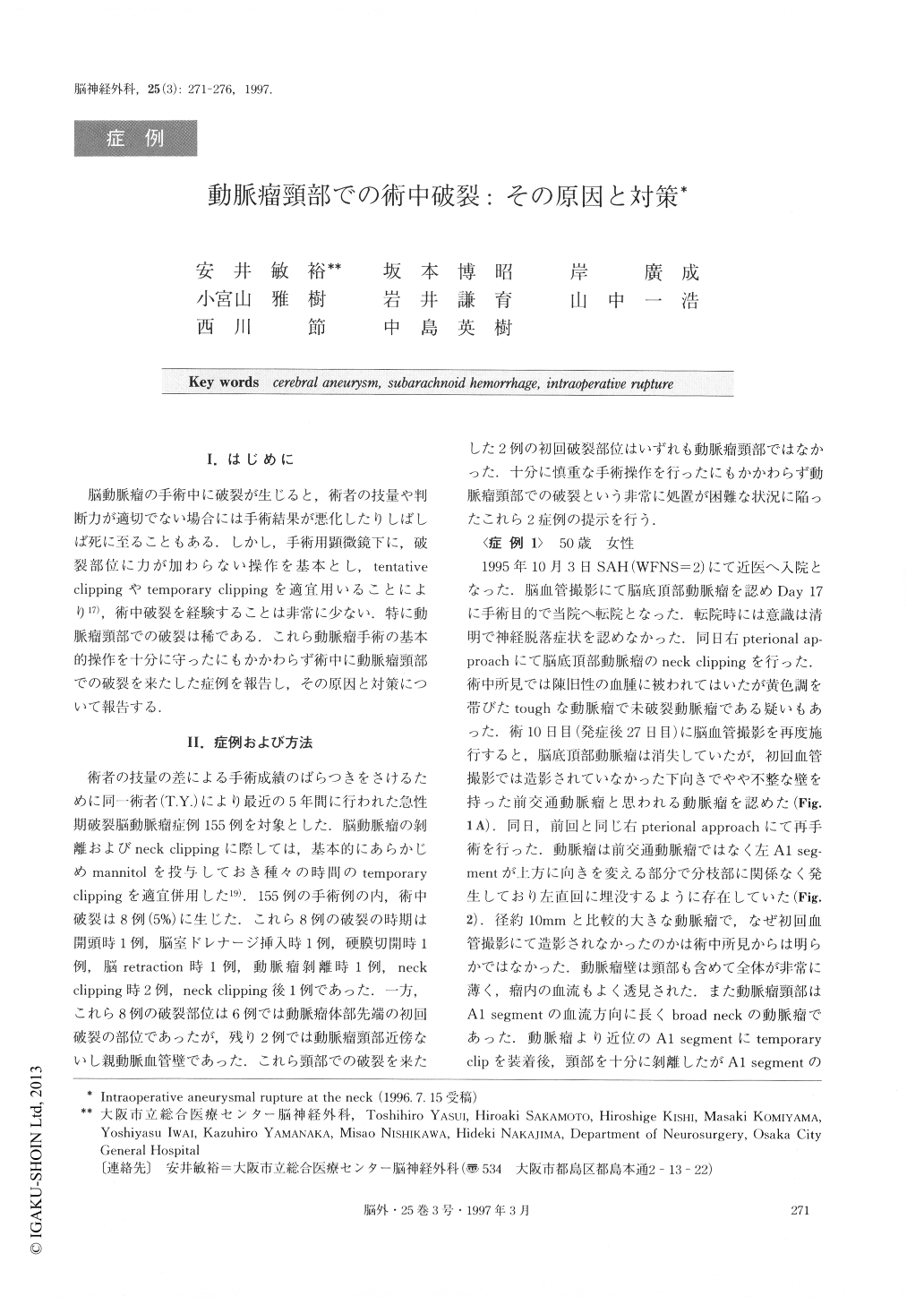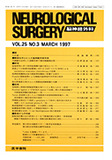Japanese
English
- 有料閲覧
- Abstract 文献概要
- 1ページ目 Look Inside
I.はじめに
脳動脈瘤の手術中に破裂が生じると,術者の技量や判断力が適切でない場合には手術結果が悪化したりしばしば死に至ることもある.しかし,手術用顕微鏡下に,破裂部位に力が加わらない操作を基本とし,tentative clippingやtemporary clippingを適宜用いることにより17),術中破裂を経験することは非常に少ない.特に動脈瘤頸部での破裂は稀である.これら動脈瘤手術の基本的操作を十分に守ったにもかかわらず術中に動脈瘤頸部での破裂を来たした症例を報告し,その原因と対策について報告する.
Intraoperative rupture of an aneurysm can lead to disastrous results when the rupture occurs at the neck. The authors have encountered eight cases (5%) of in-traoperative rupture in a series of 155 patients. All pa-tients were operated on in the acute stage by one of the authors of this paper (T. Y.). In six cases, the aneurysm ruptured at the dome and in two, at the neck. We re-port these two patients with intraoperative rupture at the neck. The first case, a 50-year-old female, de-veloped SAH, but a 4-vessel study failed to show an aneurysm. The second series of angiograms obtained ten days later showed a broad-based, left proximal A1aneurysm. It was decided to employ a right pterional approach. The aneurysm was arising from the right A1segment just proximal to the anterior communicating artery. The neck was wide, with thin walls. Thus, it seemed better to apply a clip parallel to the A1 seg-ment axis than to apply it from a direction perpendicu-lar to the A1 segment axis. However, the right pterion-al approach precluded a parallel clipping, so the blades of a clip were applied perpendicularly. The clip seemed not to be completely across the neck of the aneurysm. After applying a temporary clip to the A1 segment prox-imal to the aneurysm, the clip blades were opened and advanced just when bursting of the sac at the base occurred and microvascular suture repair was required to control the bleeding.
The second case, a 57-year-old female, underwent clipping of a right IC-PC aneurysm. However, two years postoperatively, the patient again suffered SAH. Cerebral angiography at this time revealed a relatively large recurrent IC-PC aneurysm in which the old clip was situated on the dome of the aneurysm. Aneurysmal clipping was performed on the day of rupture. Tough granular tissue was removed from the ICA, PcomA, aneurysmal neck, and the old clip. After the true neck was identified, a straight clip was applied to the neck parallel to the ICA. Soon after the clipping, arterial bleeding occurred near the neck. The ruptured aneurysm was trapped using two temporary clips. A curved clip was applied to the ruptured neck, including the wall of the ICA, to control the bleeding. This clip-ping caused a substantial stenosis of the ICA. Both pa-tients demonstrated postoperative neurological deficits due to ischemia caused by temporary clipping. These encounters dramatically demonstrated that a very thin-walled aneurysm or a recurrent aneurysm has a fragile neck. In surgical treatment of these unusual aneurysms, a clip should be placed on the neck parallel to the pa-rent artery. Furthermore, temporary clipping is advis-able when dissecting the neck or applying the clip to the neck to reduce the damage to the neck.

Copyright © 1997, Igaku-Shoin Ltd. All rights reserved.


